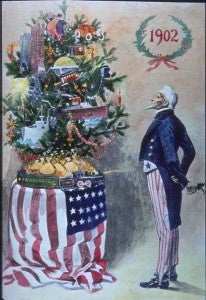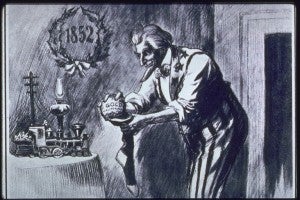
“Footbridge ropes stretch across the Golden Gate during the construction of the bridge, September, 1935”
The wonderful people over at the California Historical Society have a free eBook–Bridging the Golden Gate: A Photo Essay–that follows the creation of the iconic Golden Gate Bridge. Follow this link to get your FREE copy downloadable through iTunes.
This photo essay and the digital collection at Calisphere provide amazing views of the bridge’s construction. Showing perilous catwalks workers used to navigate between towers and the enormity of the undertaking.

“Looking towards Marin County from Fort Point in San Francisco, as the floor of the Golden Gate Bridge takes shape, October, 1936”
For the elementary school classroom (or even the high schoolers to make them smile) try this great book, Pop’s Bridge by Eve Bunting. The story follows Robert’s father and his adventures as a “skywalker” building the bridge.















